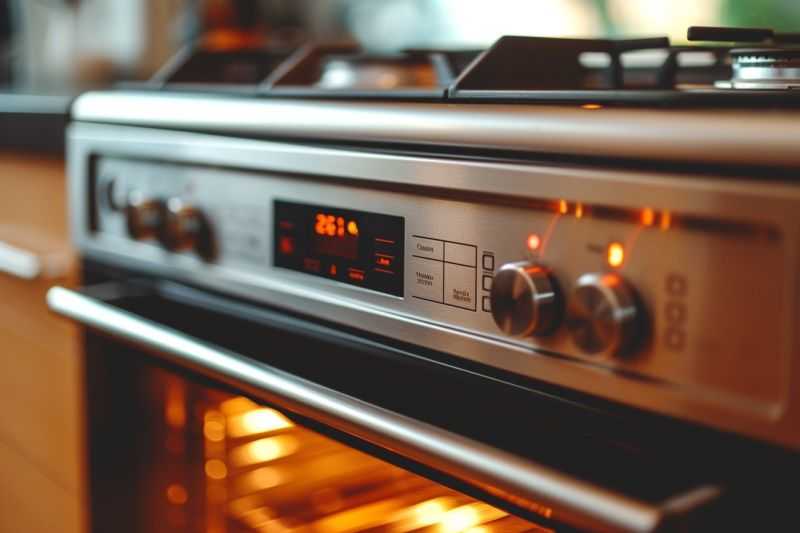Ovens are a staple appliance in kitchens around the world, essential for baking, roasting, and cooking a wide variety of dishes. From traditional gas and electric ovens to modern convection and steam ovens, there are numerous types to choose from, each offering its own unique features and benefits.

In this comprehensive guide, we’ll explore some of the most popular types of ovens available on the market today, as well as essential tips for oven maintenance and cleaning to keep your appliance in top condition.
Gas Ovens: Traditional and Reliable
Gas ovens have been a kitchen staple for decades, known for their reliability and even heating. These ovens use gas as a fuel source to generate heat, which is evenly distributed throughout the oven cavity for consistent cooking results. Gas ovens are preferred by many chefs for their precise temperature control and ability to quickly reach high temperatures, making them ideal for baking bread and roasting meats.
Electric Ovens: Versatile and Efficient
Electric ovens have become increasingly popular in recent years due to their versatility and energy efficiency. These ovens use electricity to generate heat, which is evenly distributed throughout the oven cavity using heating elements. Electric ovens often feature a variety of cooking modes, such as bake, broil, and convection, allowing for greater flexibility in cooking a wide range of dishes. Additionally, electric ovens are known for their consistent heating and precise temperature control, making them a favorite among home cooks and professional chefs alike.
Convection Ovens: Faster Cooking, Better Results

Convection ovens are a popular choice for home cooks looking to achieve professional-level results. These ovens feature a fan that circulates hot air throughout the oven cavity, resulting in faster cooking times and more even browning. Convection ovens are ideal for baking cookies, pastries, and other delicate items that require precise temperature control and even heat distribution. Additionally, convection ovens are energy-efficient, as they cook food more quickly than traditional ovens, reducing overall cooking time and energy consumption.
Steam Ovens: Healthy and Nutritious Cooking
Steam ovens are gaining popularity among health-conscious consumers looking to cook nutritious meals with minimal fat and oil. These ovens use steam to cook food, which helps retain moisture and nutrients while preserving the natural flavors and textures of ingredients. Steam ovens are ideal for cooking vegetables, fish, and grains, as well as for reheating leftovers and defrosting frozen foods. Additionally, steam ovens are known for their gentle cooking process, which helps prevent food from drying out or becoming overcooked.
Oven Maintenance and Cleaning: Essential Tips for Longevity
Specialist agree that regardless of the type of oven you own, proper maintenance and cleaning of ovens is essential for ensuring optimal performance and longevity. We spoken to many professionals and they always mention these essential tips for keeping your oven in top condition:
Regular Cleaning: Clean your oven regularly to remove built-up grease, food residue, and spills. Use a mild detergent and warm water to wipe down the interior and exterior surfaces, and don’t forget to clean the oven racks and door glass.
Deep Cleaning: Deep clean your oven periodically to remove stubborn stains and baked-on residue. You can use a commercial oven cleaner or make your own using baking soda and vinegar. Follow the manufacturer’s instructions for best results.
Check Seals and Gaskets: Inspect the seals and gaskets around the oven door regularly to ensure they are intact and free from damage. Damaged seals can affect the oven’s ability to maintain temperature and may lead to energy loss.
Replace Filters: If your oven has a filter or ventilation system, make sure to replace or clean it regularly to ensure proper airflow and ventilation. Clogged filters can affect cooking performance and may lead to overheating.
Professional Maintenance: Consider scheduling professional maintenance for your oven annually to keep it in top condition. A qualified technician can inspect the appliance for any issues and perform necessary repairs or adjustments to ensure optimal performance. Depending one the manufacturer and model, this should happen every 6 or 12 months. “We often see completely ruined ovens, which after 2 years are no longer functional,” says one of our fellow professionals from Optima Cleaners. By the way – feel free to check their website and learn how to properly clean and maintain your oven: https://optimacleaners.com.au/oven-and-bbq-cleaning/sydney/
By following these essential tips for oven maintenance and cleaning, you can prolong the lifespan of your appliance and enjoy delicious meals for years to come.

Conclusion: Choosing the Right Oven for Your Needs
In conclusion, there are numerous types of ovens available on the market today, each offering its own unique features and benefits. Whether you prefer the reliability of a gas oven, the versatility of an electric oven, the speed of a convection oven, or the health benefits of a steam oven, there is a perfect option to suit your cooking needs.
Regardless of the type of oven you choose, proper maintenance and cleaning are essential for ensuring optimal performance and longevity. By following the essential tips outlined in this guide, you can keep your oven in top condition and enjoy delicious meals for years to come. So, whether you’re baking bread, roasting vegetables, or cooking a family dinner, choose the right oven for your needs and unlock the secret to culinary success.




